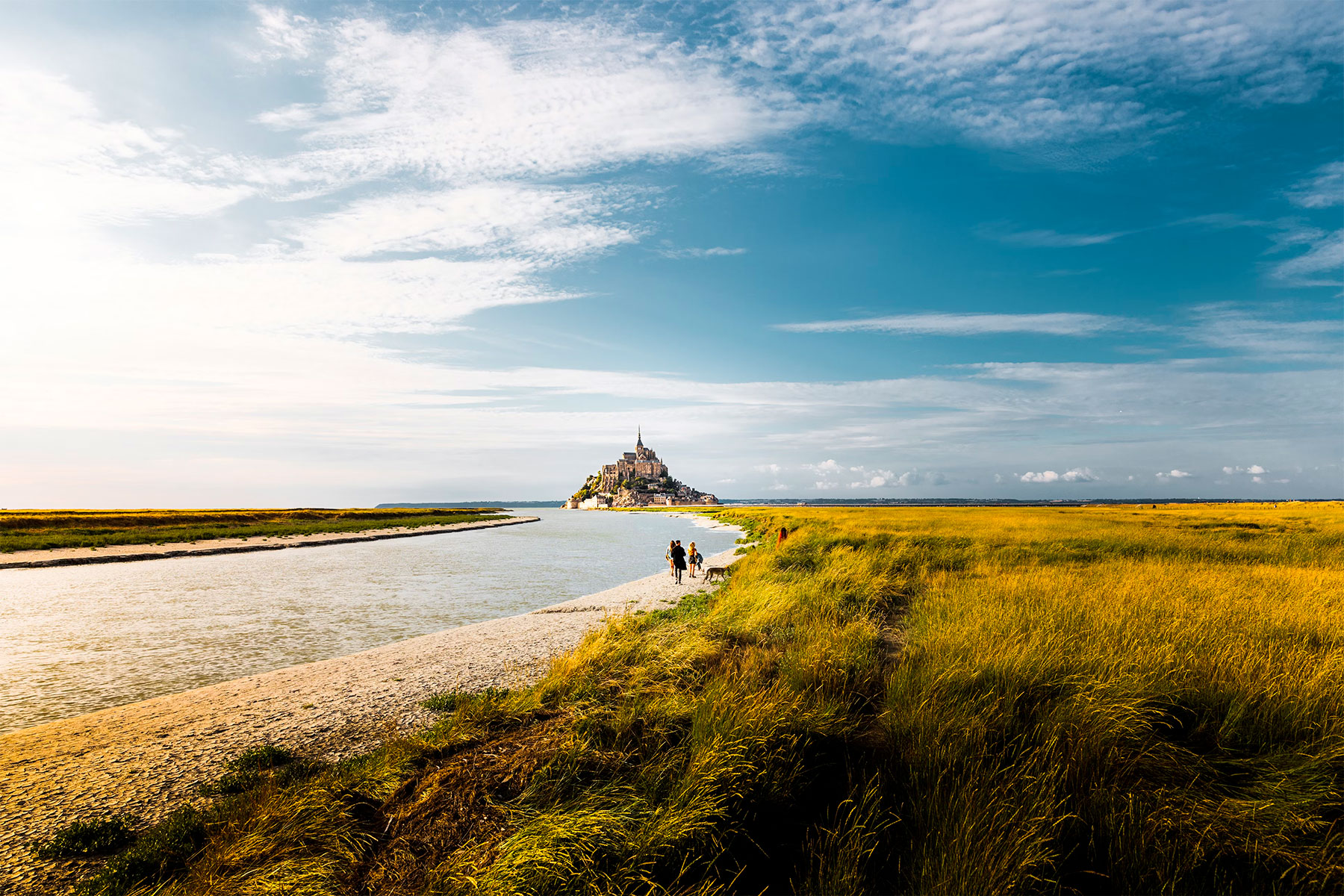Mont Saint-Michel, located in Normandy, France, is a UNESCO World Heritage site renowned for its unique architectural design and historical significance. Established in the 8th century, this island commune has evolved from a monastic settlement to a fortified abbey, playing pivotal roles in various historical events. Today, it stands as a major tourist destination, attracting millions of visitors annually, and serves as a symbol of cultural heritage and environmental resilience.
Going to Mont St Michel
Why visit Mont Saint-Michel
Mont Saint-Michel offers visitors a unique blend of historical architecture, cultural significance, and natural beauty. The island’s abbey, perched atop a rocky hill, showcases a mix of Romanesque and Gothic architectural styles. The Romanesque nave, constructed in the 11th and 12th centuries, and the Flamboyant Gothic choir, built between 1450 and 1521, exemplify the architectural evolution over centuries.
The surrounding bay is known for having some of the highest tidal variations in Europe, with differences reaching up to 15 meters between low and high tides. This natural phenomenon allows visitors to witness the island transforming from being completely surrounded by water to accessible by foot over sandbanks.
Additionally, the narrow streets and medieval structures within the commune provide an immersive experience into the past, making Mont Saint-Michel a must-visit for history enthusiasts and travelers seeking a distinctive destination.

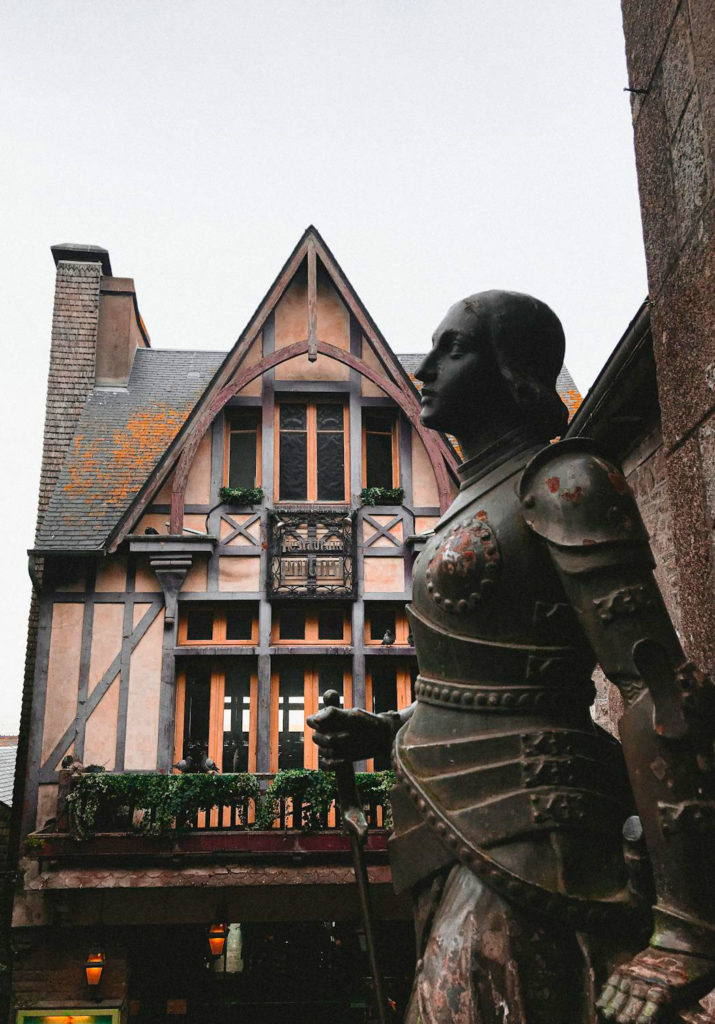
Location of Mont Saint-Michel
Mont Saint-Michel is situated in the Normandy region of France, near the border with Brittany. The island is located approximately 1 kilometer off the country’s northwestern coast, at the mouth of the Couesnon River. The nearest major city is Avranches, about 20 kilometers to the south. The geographical coordinates are approximately 48°38′10″N latitude and 1°30′41″W longitude.
The surrounding bay covers an area of about 500 square kilometers and is subject to some of the most extreme tidal variations in Europe. During high tide, the island appears isolated, while at low tide, vast sandbanks emerge, allowing access by foot. This unique location has contributed to both its historical defensive advantages and its modern-day appeal.
A brief history of Mont Saint-Michel
The history of Mont Saint-Michel dates back to the early 8th century. According to legend, in 708 AD, the Archangel Michael appeared to Aubert, the Bishop of Avranches, instructing him to build a sanctuary on the rocky islet then known as Mont Tombe. Following this vision, a small oratory was constructed, marking the beginning of the site’s religious significance.
In 966, a community of Benedictine monks settled on the mount, initiating the construction of the abbey. Over the centuries, the abbey expanded, incorporating various architectural styles, including Romanesque and Gothic elements. During the Hundred Years’ War, Mont Saint-Michel served as a strategic fortress, successfully resisting multiple English sieges, which enhanced its reputation as an impregnable stronghold.
Following the French Revolution, the abbey was repurposed as a prison, a function it served until 1863. Recognizing its historical and architectural value, restoration efforts began in the late 19th century. In 1979, Mont Saint-Michel and its bay were designated as a UNESCO World Heritage Site, acknowledging its cultural and historical significance.
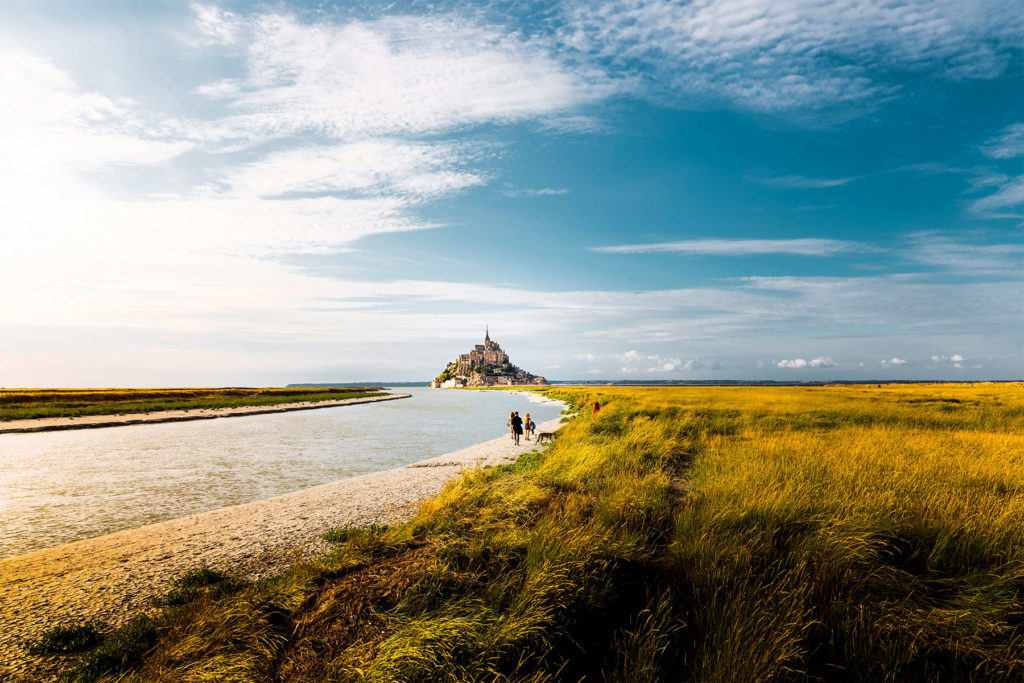
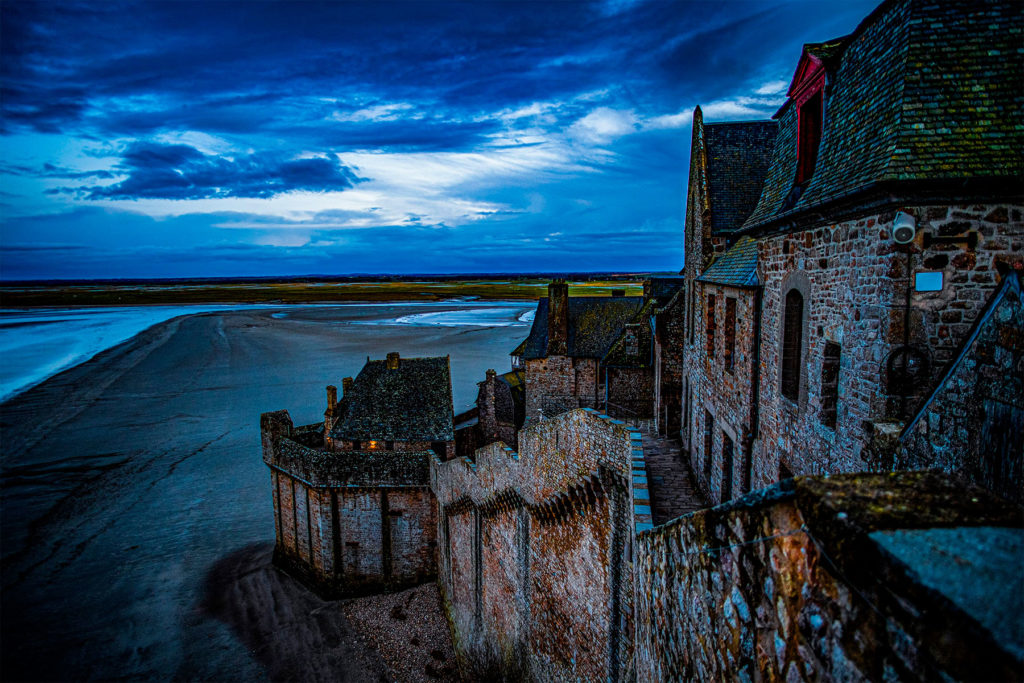
The importance of Mont Saint-Michel
Tourism
Mont Saint-Michel is one of France’s most visited landmarks, attracting millions of tourists each year. In 2024, the site welcomed approximately 2.71 million visitors, with 1.48 million specifically touring the abbey. This marked a slight decrease of 5% compared to 2023, a decline attributed to unfavorable weather conditions and the Paris Olympic Games.
Local Symbolism
Beyond its touristic appeal, Mont Saint-Michel holds significant cultural and historical symbolism. It stands as a testament to medieval architecture and the enduring human spirit in overcoming natural and man-made challenges. The site’s evolution from a monastic center to a fortress and later a prison reflects the dynamic history of the region and its adaptability through changing times.
Environment
The bay surrounding Mont Saint-Michel is an ecological habitat supporting diverse flora and fauna. The extreme tidal variations create unique conditions for various species, making it a site of environmental interest. Conservation efforts are in place to preserve this delicate ecosystem, balancing the needs of tourism with environmental protection.
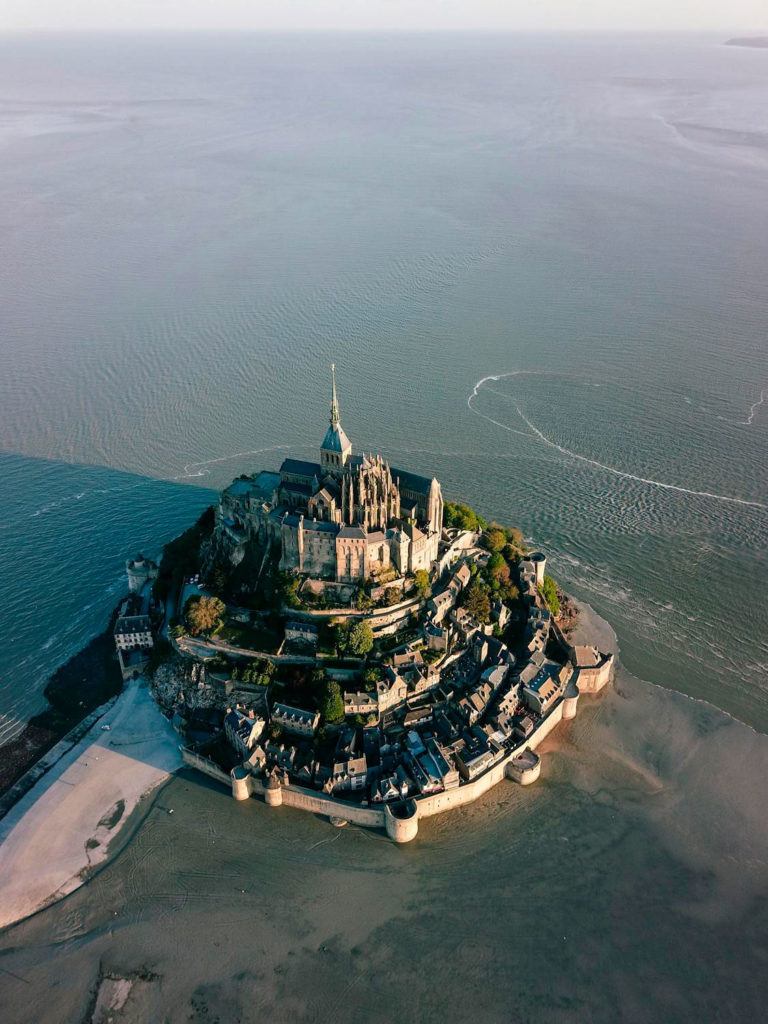
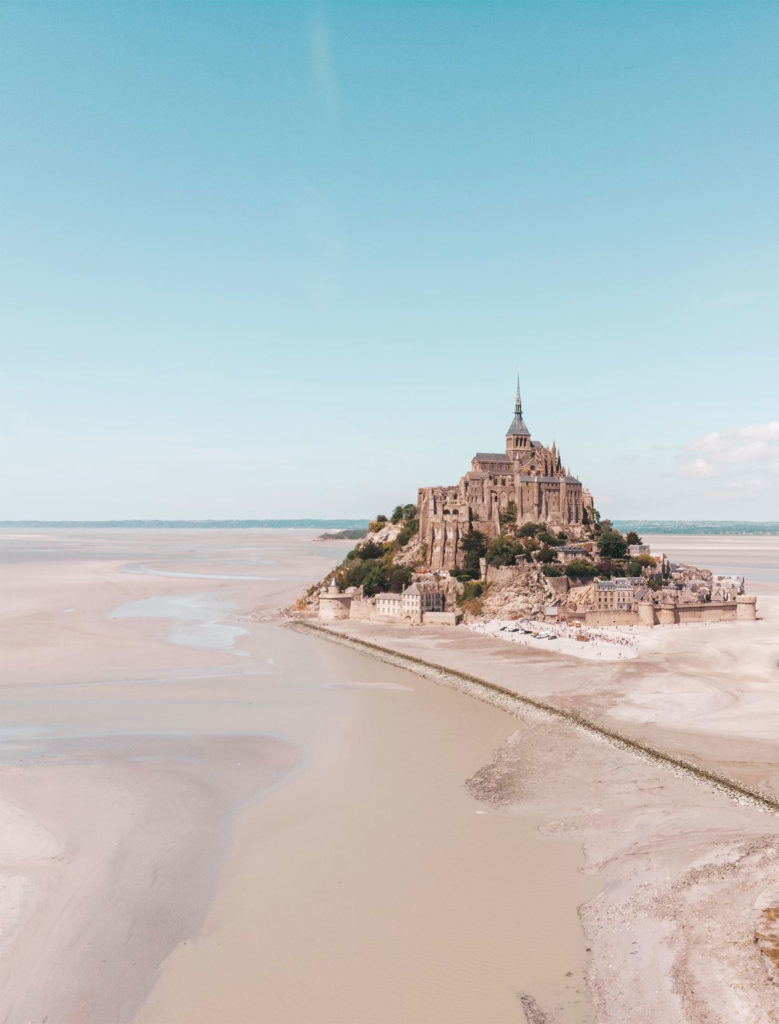
Special features of Mont Saint-Michel
One of the most remarkable features of Mont Saint-Michel is its dramatic tidal phenomenon. The bay experiences some of the highest tidal ranges in Europe, with differences up to 15 meters between low and high tides. This results in the island being completely surrounded by water during high tide and accessible by foot during low tide, a spectacle that occurs approximately 50 to 90 times a year.
Architecturally, the abbey is a masterpiece of medieval construction. The complex includes the Merveille, a 13th-century addition featuring a series of elegant monastic buildings. The abbey church itself is built over three crypts, with the oldest dating back to the Carolingian era (8th–10th century).
How to visit Mont Saint-Michel
Access and transportation
Mont Saint-Michel is accessible by various modes of transport. The nearest major cities are Rennes (approximately 75 km) and Caen (around 125 km). Public transport options include:
- Train: Direct trains run to Pontorson-Mont-Saint-Michel station, located 9 km from the site. From there, shuttle buses (approximately €3.00 or $3.25 round trip) operate regularly to the island.
- Car: Parking is available near the mainland, costing €15 per day. A pedestrian causeway connects the parking area to the island, with free shuttle buses also available.
Visitors should check tide schedules when planning their trip, as high tides may temporarily restrict access to the island.
Entrance fees and opening hours
The entrance to the island is free, but visiting the abbey requires a ticket. Current prices are:
- Adult ticket: €11.00
- Discounted ticket (students and large groups): €8.00
- Free entry: Visitors under 18 or EU citizens aged 18–25
The abbey is typically open from 9:30 AM to 6:00 PM. Opening hours may vary during holidays or special events.
Best times to visit
The ideal months to visit Mont Saint-Michel are April to June and September to October. These periods offer pleasant weather and smaller crowds. Visitors during spring tides can witness the dramatic transformation of the island.
Tips for visitors
- Wear sturdy, waterproof footwear to navigate slippery areas, particularly during low tide walks.
- Guided tours are available, with costs starting at €15 per person for group tours. Private tours may cost significantly more, depending on the service provider.
- Accommodation options range from hotels on the mainland (starting around €60 per night) to the limited lodgings on the island itself, which are more expensive (starting at €150 per night).
XperienceFrance is your travel specialist in France.
